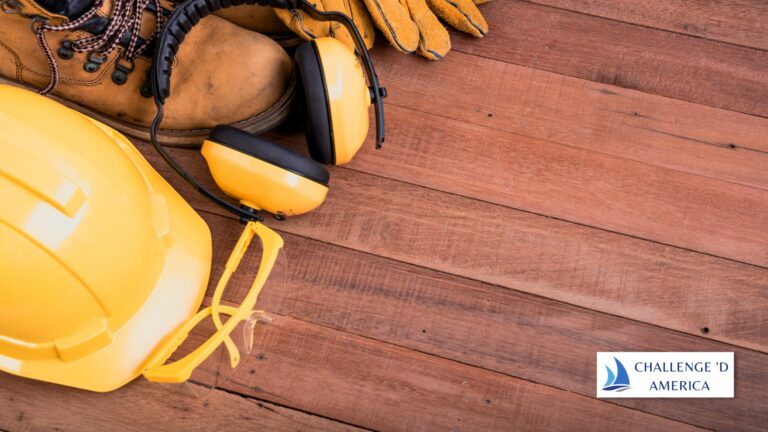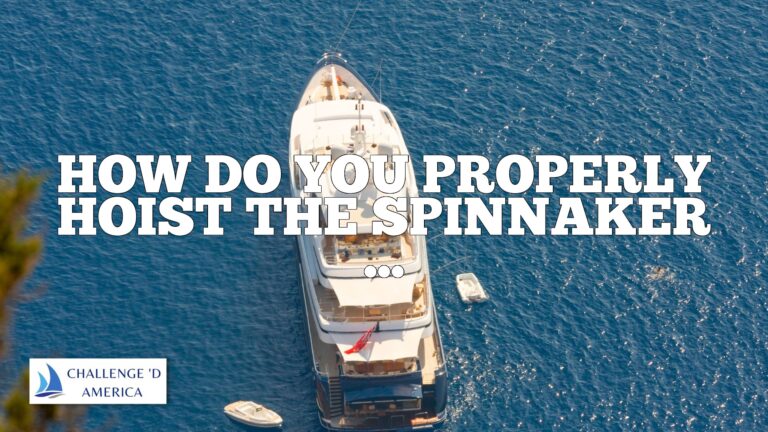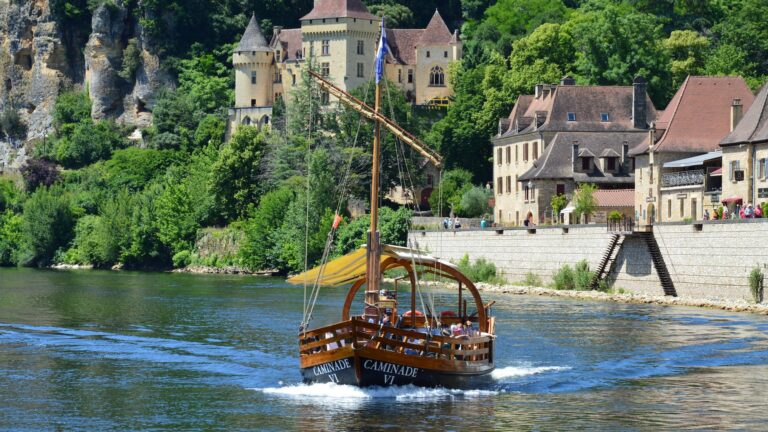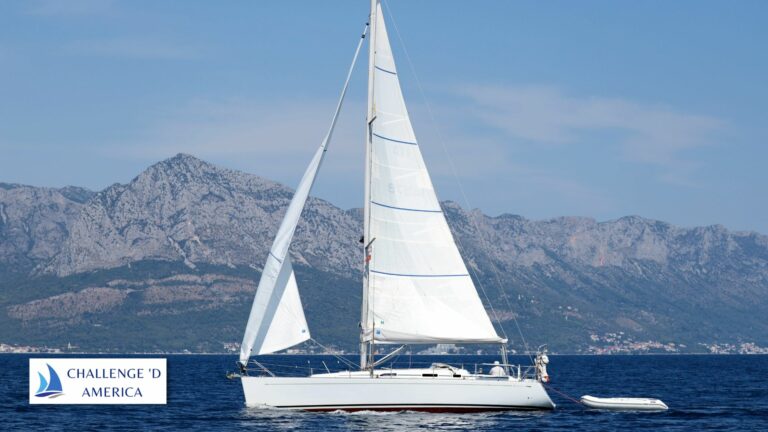What Is a Forestay On a Sailboat?
Sailboats are complex pieces of marine engineering, and it takes an experienced sailor to understand the intricacies of operating one safely and efficiently.
One critical element that helps make sailing possible is the forestay, which plays an essential role in keeping the mast upright and providing stability to the boat as it moves through the water.
In this article we will explore what is a forestay, how it works, and why it’s important to know about its anatomy and installation process before you set sail for the open sea!
What Is a Forestay?
A forestay (or headstay) is a cable or wire rope which connects the bow (front) of the boat to the mast, providing both structural integrity and stability while sailing. The forestay prevents the mast from falling aft (backwards), which can be dangerous in strong winds or rough seas. It also provides additional sail area by allowing sails to be attached higher up on the mast than would otherwise be possible without it.
Additionally, when used in combination with other rigging components such as running backstays or jib sheets, the forestay can help shape sails into an efficient configuration that maximizes performance in varying wind conditions.
Types of Forestays
The type of forestays used can vary depending on the size and type of vessel being sailed, as well as personal preferences for performance or aesthetics. The two main types are full-length or fractional stay systems:
- Full-Length: A full-length system runs from the deck to just below the top of the mast, providing maximum support and stability while sailing in high winds or rough seas conditions, however this system requires more maintenance due to its increased complexity compared to fractional systems.
- Fractional: A fractional stay system runs from 1/8th to 1/4th length from top of mast to deck, this system provides less support than full length systems but requires less maintenance due to its simplicity and is often preferred by performance sailors who prioritize speed over stability in certain conditions.
Benefits Of a Forestay
A forestay offers several benefits for sailboats, including:
- Improved stability: The forestay helps keep your mast upright even when sailing in high winds or rough seas, which makes for smoother sailing overall, this increased stability also reduces stress on other rigging components such as stays or shrouds as well as preventing accidental damage caused by excessive movement in heavy weather conditions.
- Increased sail area: By connecting at higher points on your mast than otherwise possible without it, your sails have more room to fill with wind while sailing, this translates into more power when racing or cruising around your favorite lake or ocean destination!
- Reduced fatigue: By eliminating unnecessary movement caused by waves or wind gusts, you’ll spend less time fighting against nature’s forces and more time enjoying your time on the water, this improved comfort while sailing will reduce fatigue over long trips and make them easier to complete successfully!
Anatomy Of a Forestay
The anatomy of a forestay consists primarily of two elements: wire rope and turnbuckles (or tensioners). Wire rope is made up of multiple strands braided together in order to provide strength and flexibility, these strands come in various types such as galvanized steel, stainless steel, etc., depending on personal preferences/budget considerations for your vessel’s rigging needs. Turnbuckles are used to adjust tension on either side of your stay – there are two types available (open body/closed body) – which allow for fine tuning your rigging setup depending on weather conditions encountered during your voyage!
How To Install A Forestay
Installing your own forestays requires knowledge about proper rigging techniques, if you’re not confident with these tasks we recommend consulting an experienced rigger before attempting any work yourself! The basic steps required include:
- Measurement & Cutting: Measure out how much wire rope you need based on where you want your stay to attach (deck/mast), then cut off any excess material using either an angle grinder or bolt cutter according tools available at any local hardware store/marine supply shop! Afterwards lay rope around mast base then attach one end with an eye splice knot – use lacing twine if necessary – then thread turnbuckle through loop created & attach opposite end using same eye splice knot mentioned earlier in order complete connection securely & safely! Finally tighten tensioner until desired level achieved using wrench provided with turnbuckle itself – don’t overtighten however as this can cause damage over time!
- Installation Of Hardware: Once stay has been secured onto vessel itself now its time install any additional hardware required such running backstays jib sheets etc depending what type boat being sailed & what performance objectives need met, ensure all components properly tightened before leaving dock ensure everything stays secure during voyage ahead!
Maintaining A Forestays
Maintaining your forestays should be part of regular maintenance routine for any boat owner who wants keep their vessel safe efficient while out at sea, some things look out include inspecting all parts regularly making sure they free corrosion rusting checking tensioning screws are tight enough secure connection not too tight cause unnecessary strain other parts loosening over time causing potential problems down road if not addressed soon enough! Additionally inspect wire ropes themselves making sure none frayed cut off excess material needed keep length consistent throughout entire length stay itself so everything remains balanced same time while sailing!
Importance Of Proper Rigging
Rigging is extremely important part preparing any sailboat properly before setting out onto open waters, improper setup can lead issues like capsize loss control potentially damaging vessel itself putting crew danger especially when dealing extreme weather conditions so always consult experienced rigger confirm everything done correctly first time round save yourself lot hassle later down line if something goes wrong once already far away shoreline!
Safety Considerations With A Forestays
When dealing with any type rigging always consider safety first foremost no matter how experienced sailor may be when comes dealing complex pieces equipment like forestays especially when dealing strong winds rough seas conditions so always take necessary precautions make sure everyone wearing life vests jackets have emergency whistle flare gun hand case anything happens out middle ocean they able call help quickly efficiently possible case emergency situation arises unexpected cause potential harm anyone onboard vessel itself!
Troubleshooting Common Issues With A Forestays
Common troubleshooting issues associated with forestays usually quite simple address involve checking connections ensure none loosening over time looking corrosion rusting excess fraying wear tear places need attention replaced soonest possible ensure everything stays secure efficient during journey ahead, also remember always consult experienced rigger confirm setup done correctly first time round save yourself lot trouble later down line if something goes wrong once already far away shoreline ensuring everyone onboard returns safe sound same way they left port original destination originally planned original journey began!!
Conclusion
In conclusion, understanding what is involved in installing and maintaining your own forestays will go far towards helping you become a better sailor who appreciates all aspects that come with owning and operating their own vessel safely and efficiently when out at sea! Always remember safety first no matter how experienced you may be – having proper equipment installed correctly will help reduce stress levels while allowing you enjoy all that comes with spending time out open waters chasing those perfect sailing days!!







